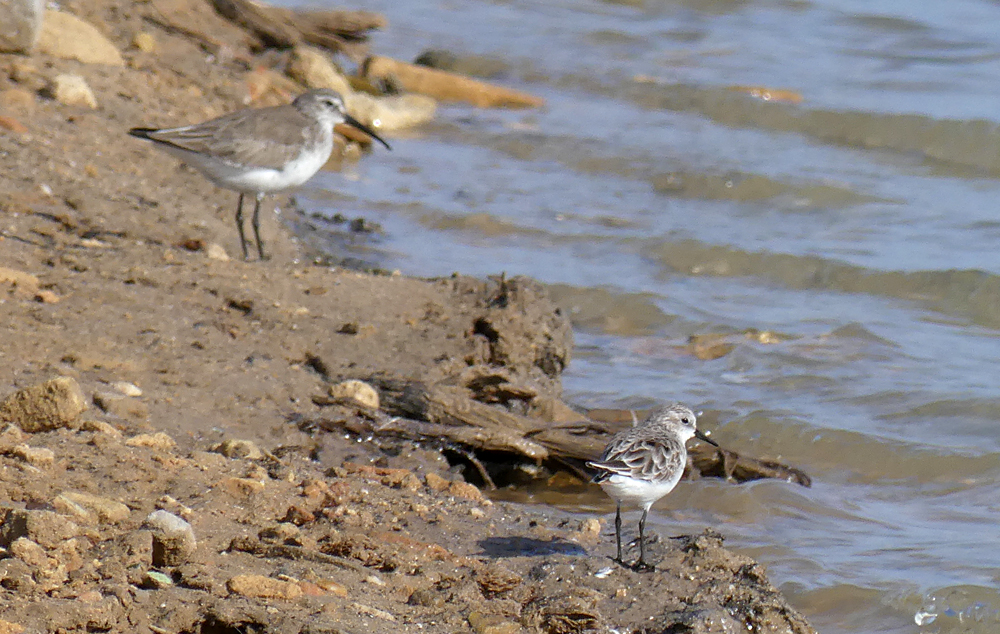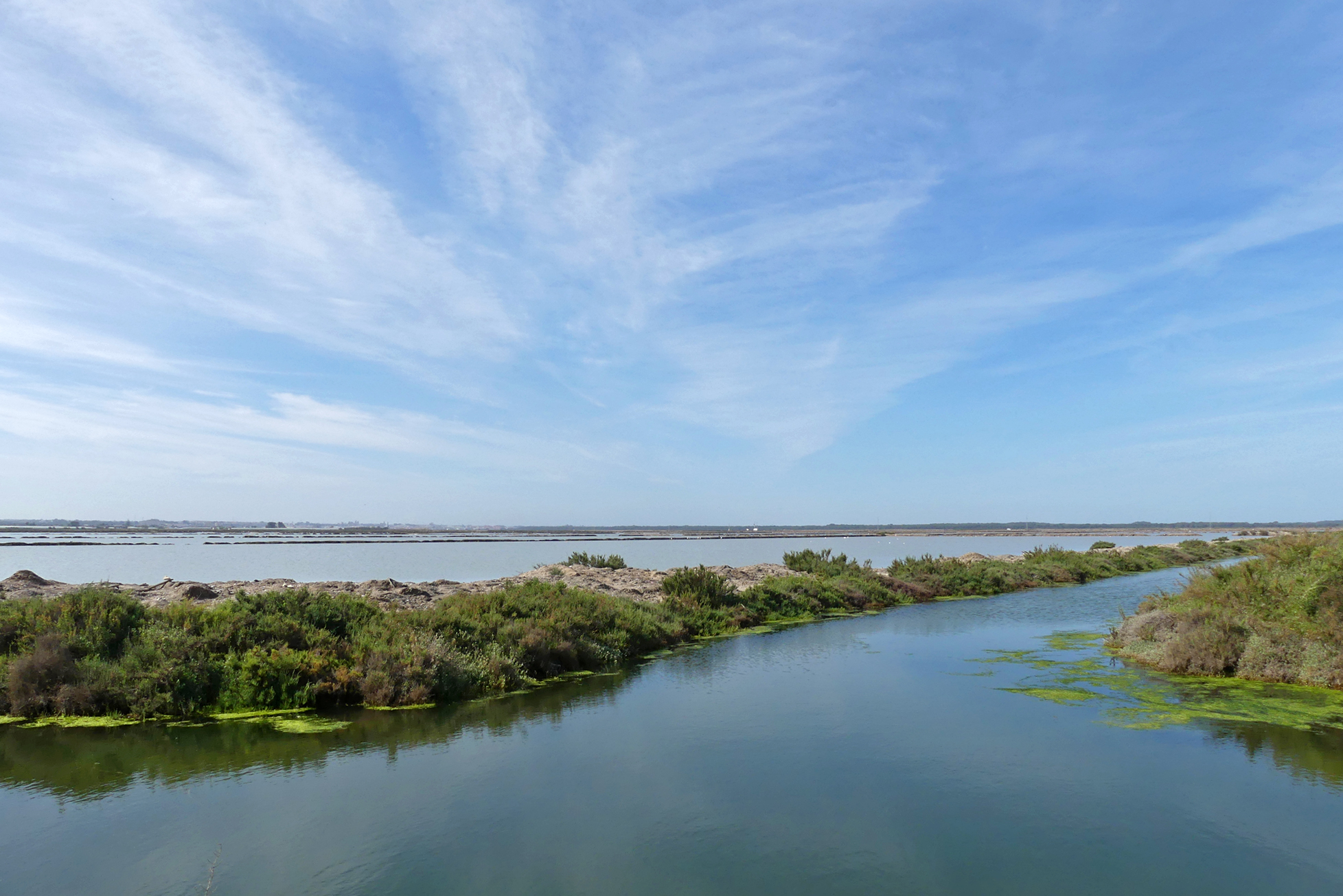Thursday 5th April 2018 (a)
/BUBO in ANDALUCIA - part 6
Our plan for our third full day in Spain was to head off north-west towards the Gualadquivir River and the marshes that lie along its east bank known as the Algaida wetlands. Of course, the more extensive marshes of the Coto Donana lie on the river's western side, but that would have meant an unrealistically lengthy round trip via Seville. The drive to Algaida was going to be long enough, we estimated about an hour and a half in the car. Unlike previous days, there were no lingering clouds or showers and we expected a hot sunny day in the field.
We had seen on eBird that there had been a few sightings of Crested Coot on a small laguna right next to the motorway near to Chiclana de la Frontera, and since it was about half way there we thought we'd stop for a quick look. However, the boldest gambles don't always pay off as we could not see any way of getting into the place and all it appeared to be was a impenetrable sea of reeds. This, together with the sat-nav sending us down tiny back alleys and tracks, meant we soon gave it up as a bad job and we filled up with petrol and continued northwards.
As the motorway reached the edges of the Bay of Cadiz the saltmarshes or marismas became extensive, stretching on for miles and miles either side of the highway. On almost every bit of lagoon we passed there seemed to be some Greater Flamingos - there must have been many hundreds of them here. Eventually we pushed our way through the countryside until we were suddenly passing through the riverside town of Bonanza which, quite appropriately, was a bit like a frontier town. As soon as we left the town and saw the river, we could see some saltpans to our left which, even from the car we could see were full of birds. We found the gates to the famous Bonanza Saltpans and drove inside, pulling up at the first spot overlooking the water. Swimming to and fro amongst the Black-winged Stilts, were some delightful Slender-billed Gulls feeding in the shallow salty waters of the pans.
Bonanza Saltpans, with the woodlands of the southern Donana in the distance
Slender-billed Gulls and Black-winged Stilts - Bonanza Saltpans
The Slender-billed Gulls were outstanding. One of the species I had not recorded since my Israel days, and I can't remember seeing them in such splendid nick as these ones were, with their blood red bills and rosy tint to the breast - like some Black-headed Gulls have had a high-class makeover. As we were watching these through our 'scopes, a couple of tiny birds buzzed past us and perched on some weeds right next to where we were standing. Not initially clicking what they were, I put them in my bins and was surprised to see a pair of perky COMMON WAXBILLS. I shouldn't have been that surprised because I had read that they were around these marshes but I didn't know how easy they would be to see. As we had had these straight away, literally on our first few steps out of the car, we presumed they would be all over the place round here. But these two, and another two that flew quickly past, were the only ones we spied all day. Although the species is common in certain parts of the world, I have not been to certain parts of the world, so this little waxbill was a new species for me. Fair enough, just an introduced category C species, but I thought that they were terrific little birds!
Common Waxbill - Bonanza Saltpans
Common Waxbill - Bonanza Saltpans
Common Waxbill - Bonanza Saltpans
A giant green weevil (Lixus sp.) - Bonanza Saltpans
We could see more birds feeding in saltpans further away so we moved on, especially as Ian was being chomped by mosquitos and other be-beets just where we were standing. Before we left, a couple of Purple Herons flew overhead. We carried on down the track, past some greenhouses and vegetable fields, until we passed a building and suddenly we were right between and amongst the saltpans. It was so exciting being able to drive along the dirt rack with water right next to you either side and, of course, birds too. I thought that we had great views of the Slender-billed Gulls before but here it was ridiculous! So long as you drove slowly you could practically roll up to feeding flocks of them. It was a photographer's dream.
Bonanza Saltpans - I was so excited by this spot I forgot to set my camera properly
Slender-billed Gull - Bonanza Saltpans
Slender-billed Gull - Bonanza Saltpans
Slender-billed Gull - Bonanza Saltpans
Slender-billed Gull - Bonanza Saltpans
Slender-billed Gull - Bonanza Saltpans
Slender-billed Gull - Bonanza Saltpans
Bonanza Saltpans
As the site was simply full of shallow-water pools, this of course attracted many species of wader. They seemed to be dotted about all over the whole pans area, so many of them were quite distant, but we came across some birds that were really close. The photo below shows a Curlew Sandpiper and Little Stint that were more or less on the side of the road. We didn't attempt to count numbers but both these species seemed very common, along with lots of Kentish Plovers, Avocets and Stilts. Other species recorded included Dunlin, Ringed Plover, Common Sandpiper, Greenshank, Redshank, Green Sandpiper, Sanderling and a single Turnstone. Larger wading birds were also very common with Flamingos, Little and Cattle Egrets, Glossy Ibis, Spoonbill all present in decent numbers. Shelducks were there as were Spanish Wagtails feeding along the dirt tracks. It was a veritable wonderland of winged creatures!
Curlew Sandpiper & Little Stint - Bonanza Saltpans
Curlew Sandpipers & Little Stints - Bonanza Saltpans
We drove to the end of these first saltpans as far as the fence, where we turned right into a more scrubby area. We were still flanked by saltpans either side but these seemed to have more space between them where the vegetation had grown up. We saw ahead of us an Osprey perched on a pylon but it wasn't going to let us drive right up to it. We had an identification conundrum here as we saw a pair of larks on the track ahead of us and we couldn't quite be sure what they were. We knew that there were Lesser Short-toed Larks in the vicinity but these birds didn't look quite right to us with their general plumage tone and their raising of their crests making them look like smallish Skylarks. We moved on without resolving the issue and drove as far as we could, parking up and wandering along the edges of a larger, seemingly tidal pool.
Osprey - Bonanza Saltpans
It was a great area to explore, with different waterbodies almost 360 degrees around us. We saw a similar selection of birds as before but there were some new things in this slightly different habitat. There were five Black-tailed Godwit feeding out on the lagoon and we had two Collared Pratincoles go overhead. A distant Short-toed Eagle soared way to the west and a few Marsh Harriers patrolled the ditches. We saw a few terns here including two superb Caspian Terns, one of which was wearing a satellite transmitter. Parties of Bee-eaters passed overhead regularly and one Flamingo gave us a superbly close flyover!
Bonanza Saltpans
Caspian Tern - Bonanza Saltpans
Greater Flamingo - Bonanza Saltpans
Greater Flamingo - Bonanza Saltpans
Greater Flamingo - Bonanza Saltpans
I again briefly saw one of those odd larks on the track between pans, then Ian called me over as he had found some more which were displaying over a drier area just to the north. We couldn't get very close to them due to the drainage ditches being in the way but we could see that the birds displaying here were definitely Lesser Short-toed Larks. Of course, this prompted us to realise that the birds we'd seen before were also LSTLs, and it shows you that if birds don't appear as you expect them to, it can throw you off a bit. I think it was especially the raising of the crests which put us off the correct ID but at least we worked it out in the end. Also in this spot we saw a Calandra Lark fly up and away.
Bonanza Saltpans
Displaying Lesser Short-toed Lark - Bonanza Saltpans
We decided, reluctantly, that it was time to move on. Simon and Niki (who's directions and tips here were again invaluable) had told us that you could spend all day and they were right. But, there were other nearby spots that we wanted to try so we returned to the car. We thought that it was about time we broke into our lunch but, after a couple of "where is it?"s and "Erm, depends where you put it?"s, we realised that our lunch was still on the counter at the apartment. It was a good job that we had seen lots of birds otherwise that kind of schoolboy error could have sent us over the edge!
Luckily, we had to drive back the way we had come in, which meant passing the feeding Slender-billed Gulls again which made us forget our hunger temporarily. Bonanza Saltpans is definitely one of my favourite birding sites and I thoroughly recommend a visit.
Slender-billed Gull - Bonanza Saltpans
If you are interested in the birds of the area and would like to join a guided tour, why not check out local experts Niki and Simon at their website here: https://ingloriousbustards.com/

























